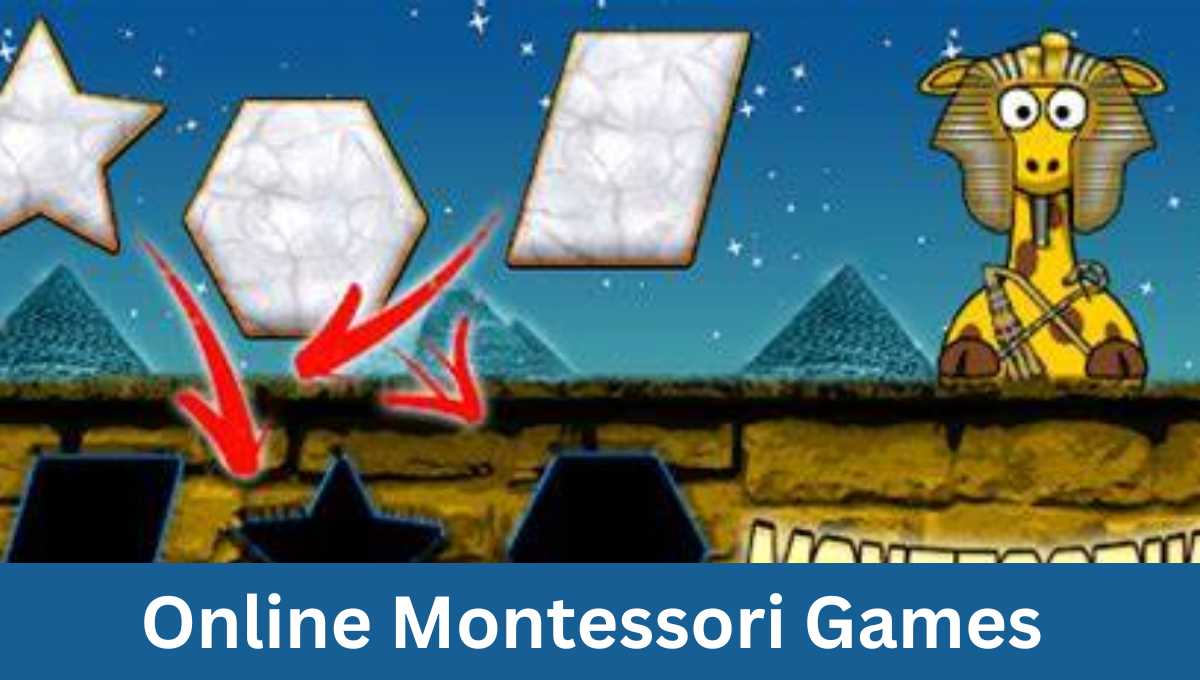What are Online Montessori Games?
The purpose of online Montessori games is to make learning fun and interactive for kids while following the principles of the Montessori educational approach.
Here are the key reasons why these games are beneficial:
Hands-On Learning
Online Montessori games provide a hands-on experience, allowing kids to engage with educational activities in a virtual environment. This hands-on approach helps them understand concepts better.
Independence and Exploration
These games encourage children to explore and learn independently. They can choose activities based on their interests, promoting a sense of autonomy in their learning journey.
Real-World Connections
The games often simulate real-world activities, connecting abstract concepts to practical, everyday experiences. This helps children see the relevance of what they are learning.
Skill Development
Montessori games focus on various skills, including sensory exploration, practical life tasks, language development, mathematics, and cultural understanding. This comprehensive approach supports holistic skill development.
User-Friendly Design
The games are designed with simplicity in mind. They have easy-to-use interfaces, age-appropriate visuals, and clear instructions, making it accessible and enjoyable for young learners.
Personalized Learning
Online Montessori games often adapt to the child’s individual progress and preferences. This personalization ensures that each child can learn at their own pace and focus on areas where they may need more practice.
Collaboration and Social Skills
Some games include multiplayer features, fostering collaboration and social interaction. This allows children to learn and play together, promoting social skills and teamwork.
Accessibility for All
The games aim to be inclusive, considering diverse learning needs. They provide support and options for different abilities, ensuring that every child can participate and benefit from the learning experience.
Parental Involvement
Online Montessori games often offer resources and insights for parents. This involvement helps parents understand the educational principles behind the games and how to extend the learning experience offline.
Continuous Improvement
Developers regularly update these games based on user feedback, ensuring that the content remains engaging and effective. This commitment to improvement reflects the dynamic nature of learning.
Game Selection Criteria

When choosing games for kids, especially those following Montessori principles, it’s important to keep a few criteria in mind.
Here’s a breakdown in simple terms:
Hands-On Interaction
Look for games that let kids actively engage with the content. Games where they can touch, move, or make decisions tend to be more beneficial for learning.
Real-Life Connections
Choose games that show connections to things in the real world. This helps kids understand why they’re learning certain concepts and makes the learning experience more meaningful.
Exploration and Choice
Good games allow kids to explore and choose what they want to do. This promotes independence and lets them follow their interests, making learning more enjoyable.
Clear Instructions
Pick games with simple and clear instructions. Kids should be able to understand what to do without feeling confused. This helps them focus on learning instead of figuring out how to play.
Age-Appropriate Design
Ensure that the game is designed for the right age group. This means the content and how it’s presented should match the developmental stage of the child, making it more engaging and understandable.
Multisensory Elements
The best games stimulate different senses. This could include seeing, hearing, or even touching different elements in the game. This multisensory approach enhances learning.
Practical Life Simulations
If possible, choose games that simulate everyday tasks. This aligns with Montessori’s emphasis on practical life skills, helping kids connect their learning to real-life activities.
Adaptive Difficulty
Look for games that adjust the difficulty level based on a child’s progress. This ensures that the game remains challenging enough to be interesting but not so hard that it becomes frustrating.
Positive Reinforcement
Games with positive feedback or rewards can motivate kids. This could be virtual stars, encouraging words, or other positive cues that make them feel good about their achievements.
Collaborative Options
If applicable, consider games that allow kids to play together. This promotes teamwork and social skills. Cooperative play can enhance the learning experience, especially in a Montessori context.
Game Categories

Sensorial Games
- What They Are: Games that engage the senses – like seeing colors, hearing sounds, or feeling different textures.
- Example Activities: Matching colors, recognizing sounds, or exploring things with different textures.
Practical Life Games
- What They Are: Games that simulate everyday tasks, helping kids learn practical skills.
- Example Activities: Sorting objects, pouring liquids virtually, or organizing items.
Language Development Games
- What They Are: Games focused on building vocabulary and language skills.
- Example Activities: Word matching, spelling games, or activities that introduce new words.
Mathematics Games
- What They Are: Games that make learning math concepts fun and interactive.
- Example Activities: Counting games, addition and subtraction challenges, or recognizing numbers.
Cultural and Science Games
- What They Are: Games that explore geography, science, and the world around us.
- Example Activities: Virtual travel adventures, geography quizzes, or simple science experiments.
User Interface Design
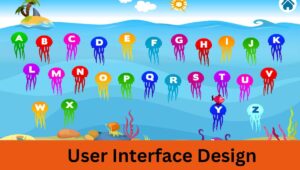
Simple and Easy to Use
- What It Means: The game should be easy for kids to understand and use without needing a lot of help.
- Why It Matters: This makes sure that children can focus on playing and learning, not on figuring out how to use the game.
Age-Appropriate Look and Feel
- What It Means: The game should look and feel right for the age of the child playing it.
- Why It Matters: This helps the child engage with the game because it feels like it’s made just for them.
Clear and Friendly Graphics
- What It Means: The pictures and images in the game should be clear and friendly.
- Why It Matters: This makes the game inviting and enjoyable for kids, creating a positive learning environment.
Intuitive Navigation
- What It Means: Moving around in the game should feel natural and easy.
- Why It Matters: Kids can explore and play without getting frustrated, keeping the focus on learning.
Incorporation of Montessori Elements
- What It Means: Including things like Montessori materials or symbols in the game.
- Why It Matters: This connects the online experience to the Montessori philosophy, creating a familiar and meaningful context for learning.
Engaging and Age-Appropriate Sounds
- What It Means: Sounds in the game should be fun and suitable for the child’s age.
- Why It Matters: Pleasant sounds enhance the gaming experience and make it more enjoyable.
Accessible Controls
- What It Means: Buttons and actions in the game should be easy to understand and use.
- Why It Matters: This ensures that kids can interact with the game smoothly, supporting a positive learning experience.
Consistent Design
- What It Means: The overall look and style of the game should be consistent throughout.
- Why It Matters: Consistency makes the game feel organized and helps kids know what to expect.
Collaborative Features
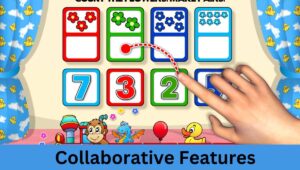
Multiplayer Options
- What It Means: Some games allow more than one player to participate at the same time.
- Why It’s Cool: Kids can play together, helping each other and learning to work as a team.
Discussion Forums or Chat
- What It Means: A space in the game where kids or parents can talk about the game, share tips, or ask questions.
- Why It’s Cool: This feature creates a sense of community, and it’s a way for parents and kids to interact with others playing the game.
Team Challenges
- What It Means: Games that require cooperation to solve problems or achieve goals.
- Why It’s Cool: Kids learn to collaborate, communicate, and share ideas while having fun.
Parent-Child Interaction
- What It Means: Some games encourage parents or caregivers to play alongside their children.
- Why It’s Cool: This strengthens the bond between parents and kids while making learning a shared experience.
Shared Achievements
- What It Means: When players reach goals or milestones, it’s celebrated with others in the game.
- Why It’s Cool: Encourages a sense of accomplishment and creates a positive, supportive environment.
Virtual Classrooms or Groups
- What It Means: Kids can be part of a virtual class or group within the game.
- Why It’s Cool: Mimics a classroom setting, promoting social interaction and a sense of belonging.
Peer-to-Peer Learning
- What It Means: Kids can teach each other or share knowledge within the game.
- Why It’s Cool: Fosters a cooperative learning environment, with older kids helping younger ones.
Feedback and Encouragement
- What It Means: Positive messages or rewards that players can share with each other.
- Why It’s Cool: Builds a supportive community and reinforces a culture of encouragement and praise.
Personalization and Progress Tracking
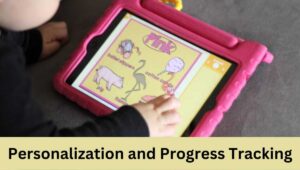
Personalization
- What It Means: Making the game unique for each child based on their preferences and learning style.
- Why It’s Cool: Kids get to choose activities that interest them, making learning more enjoyable and tailored to their needs.
Individualized Learning Paths
- What It Means: Each child follows a learning path that suits their pace and level of understanding.
- Why It’s Cool: Kids can learn at their own speed, ensuring they grasp concepts before moving on to new challenges.
Adaptive Difficulty Levels
- What It Means: The game adjusts its difficulty based on how well the child is doing.
- Why It’s Cool: Ensures that the game is challenging enough to be interesting but not too hard to be frustrating.
Progress Reports
- What It Means: Regular updates that show parents or educators how well a child is doing in the game.
- Why It’s Cool: Helps parents understand what their child is learning and where they might need extra support.
Rewards and Recognition
- What It Means: Giving kids virtual rewards or recognition for completing tasks or reaching goals.
- Why It’s Cool: Motivates children to keep learning and provides a sense of accomplishment.
Skill-Based Challenges
- What It Means: Offering activities that match the child’s current skill level.
- Why It’s Cool: Kids are always engaged in tasks that are just right for their abilities, promoting continuous improvement.
Feedback Loops
- What It Means: Providing feedback on a child’s performance in a timely manner.
- Why It’s Cool: Helps kids understand what they did well and where they can improve, fostering a growth mindset.
Goal Setting
- What It Means: Allowing children to set their own learning goals within the game.
- Why It’s Cool: Encourages responsibility and independence in their learning journey.
Regular Updates and Feedback Mechanism
Regular Updates
- What It Means: Making improvements and adding new things to the game on a regular basis.
- Why It’s Cool: Keeps the game fresh and exciting, with new challenges and activities for kids to explore.
Feedback Mechanism
- What It Means: A way for parents, educators, and even kids to share their thoughts and suggestions about the game.
- Why It’s Cool: Helps the people behind the game understand what’s working well and where they can make things even better.
Bug Fixes
- What It Means: Correcting any little problems or errors in the game.
- Why It’s Cool: Ensures a smooth and enjoyable experience, without any frustrating glitches.
Improved Features
- What It Means: Making existing parts of the game better based on feedback and observations.
- Why It’s Cool: Enhances the overall quality of the game, making it more engaging and effective for learning.
New Challenges and Levels
- What It Means: Adding more difficult tasks or exciting adventures to the game.
- Why It’s Cool: Keeps kids motivated and eager to explore, preventing boredom and encouraging continued learning.
Parent and Educator Notifications
- What It Means: Informing parents and educators about any changes or updates to the game.
- Why It’s Cool: Keeps adults in the loop, allowing them to stay involved in their child’s learning experience.
Quick Response to Issues
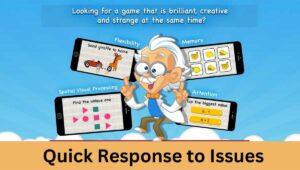
- What It Means: Addressing any problems or concerns raised by users promptly.
- Why It’s Cool: Shows that the creators care about the experience of the players and are committed to making it the best it can be.
Adapting to User Suggestions
- What It Means: Listening to the ideas and feedback from users and making changes accordingly.
- Why It’s Cool: Makes users feel heard and valued, creating a positive and collaborative relationship between creators and players.
Here are the following links that can help you to explore more about Montessori Education.
How to Celebrate Montessori Birthday? – Montessori line
What is Montessori Gym? – Montessori line
How to care for Montessori Environment? – Montessori line
What does a Montessori teacher do? – Montessori line
How Can Montessori Parent Education Enhance My Parenting Skills? – Montessori line
